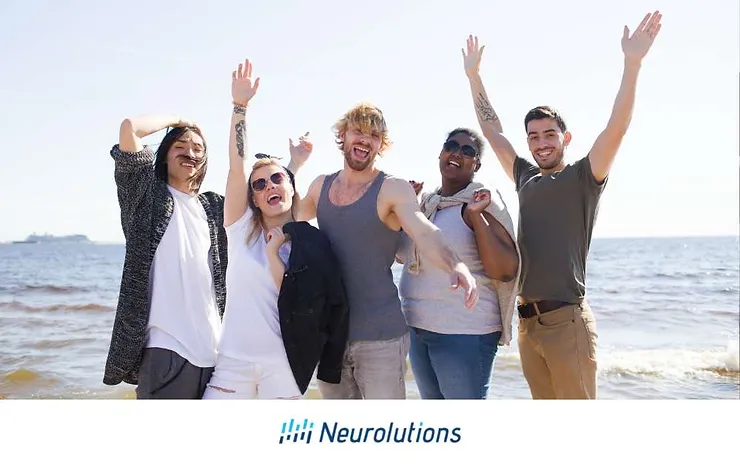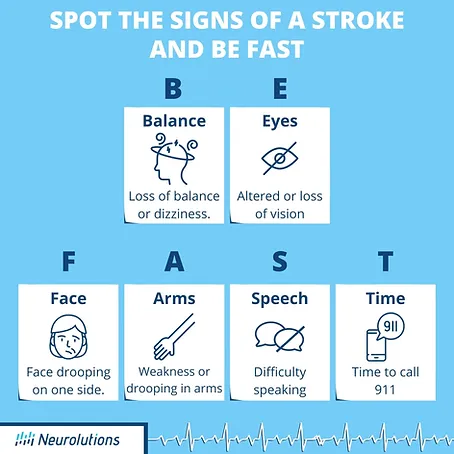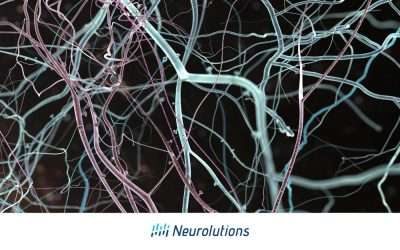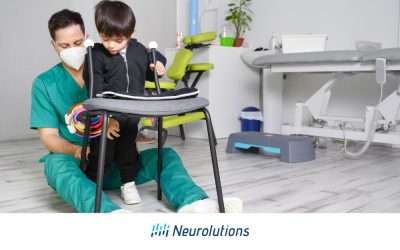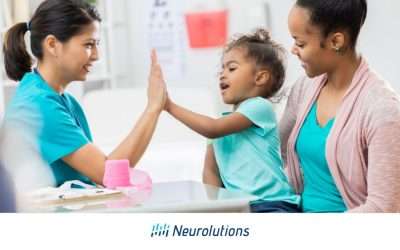It is estimated that 5-20% of all strokes occur in young people. When speaking of “young” stroke survivors, most literature refers to all individuals 45 years old or younger. Recent publications show a rise in the incidence of young people but stroke is still however much less prevalent than in people aged 68 or older. Strokes in young people tend to have more of an increase of socioeconomic consequences for later in life consequences compared to older adults who have strokes. Specifically, strokes that occur prior to reproductive years are disproportionately large affected economically vs. the older population.
Cause of Stroke in Younger People
The etiology of stroke causes varies greatly for young people based on their age and living circumstances. Compared to older adults, genetics and underlying conditions rather than choice conditions such as blood pressure and lifestyle causes. For young people who have strokes, there is some evidence to support the fact that minorities specifically, blacks and Hispanics along with women, are more likely to have a stroke as well as be hospitalized following a stroke than whites their same age.
Generally, the main causes of stroke in young people are the following:
- Undetermined or cryptogenic stroke (of unknown cause)
- Problems with vessels supplying the brain (arteriovenous malformation) or blood vessels with a weakened wall that can bulge or tear
- Hematological disorders blood clotting disorders or sickle cell disease
- Large artery atherosclerosis (hardening)
- Cardioembolism
- Non-atherosclerotic vasculopathy (diseases of the vascular system)
- Dyslipidemia (imbalance of lipids as in cholesterol)
- Smoking
- Hypertension (high blood pressure)
- Signs of Stroke in Younger People
Signs and symptoms of a young person’s stroke are similar to that of an adult. However, due to the decreased incidence of stroke in young people, those surrounding them may not be aware of the risks. People can also associate strokes following tasks such as playing sports as merely dehydration or fatigue and not stroke. The following are signs that a young person is the following:
- Sudden lethargy or drowsiness
- Seizures
- The trouble with balancing or walking
- Slurred speech or changes in language
- Weakness or numbness on one side of the body
- Changes in vision
Drug Use and Stroke
Certain illicit drugs are associated with an increased risk of stroke. Cocaine is the most common drug to cause a stroke due to the prevention of reuptake of neurotransmitters, vasospasm, cerebral vasculitis, cardioembolism, or increased blood pressure caused by the drug. Young adults tend to have more of a reputation for doing drugs compared to older adults. Upon presentation of stroke symptoms, some young stroke survivors and medical providers will sometimes dismiss the initial symptoms of a stroke for alcohol or substance use. The real stroke is sometimes not discovered until days following, making medical intervention more limited.
Birth Control and Stroke
In young women, higher estrogen oral contraceptive pills have been associated with an increased risk of both ischemic and hemorrhagic stroke, specifically with long-term use of oral contraceptives. Additionally, the risks associated with the use of oral contraceptives go down after termination of use.
Pregnancy and Stroke
Women of childbearing age also demonstrate risks of stroke associated with pregnancy and childbirth, in turn concluding that it may be safer for some women to be on oral contraceptives compared to the alternative. It is best to speak with your physician about the risks of medications and pregnancy-related risks if this pertains to you
Other Stroke Factors
Additionally, a child or adolescent brain responds very differently to brain injury or stroke compared to adults or aged brains. Children have increased metabolic rates, increased number of synapses and greater blood flow, and greater skull plasticity.
Compared to the older population, modifiable risk factors for stroke such as dyslipidemia, smoking cessation, and hypertension are highly doable in the young population. Research shows there is no statistical difference between modifiable risk factors between location, nutrition, lifestyle, or genetic diversity in young adults. Therefore, treatment is focused on primary prevention aimed at reducing death related to stroke. Lastly, there is an increased incidence of stroke in the young, citing more need for continued research. For stroke survivors over the age of 45, the likelihood of a second stroke is within the first 5 years.
Stroke rehabilitation for Young Survivors
Considerations for rehabilitation vary greatly for children for infants, children, teenagers, and young adults versus adults or older or adults. Special considerations are very different due to the developmental continuum. It is best to think of how development may be affected based on the age at which the stroke occurs.
If a stroke occurs in utero or infancy, rehabilitation may focus on skills such as positioning, feeding, and swallowing and family education. Family and caregiver education continues throughout the lifespan of all stroke survivors.
When affected during the preschool years, rehabilitation continued to focus on developing skills such as play, self-care, socialization, and mobility.
In school-aged children, rehabilitation may focus more on school needs such as mobility at school, fine and gross motor skills, socialization, and assistive technology.
In the teenage years, rehabilitation may focus on school-based skills but also transition to adulthood such as employment, continued education, or independent living.
In young adulthood or college-aged years, rehabilitation may focus on continued modifications for employment and independent living as well as reproductive needs and adoptive parenting.
For older adults, rehabilitation does not center on developing skills as much as turning to their prior level of function for skills that they were already performing as an adult.
Services for children are very different from adults. If under the age of two, most states have services related to early intervention. For public schools, all school-aged children have the right to school-related therapy services which can include special school services in the form of an IEP (Individual Education Plan) or 504 Plan which provides accommodations ensuring all children no matter medical limitations can participate in school.
When transitioning to adulthood and state-to-state services vary for post-school-related services and can be difficult to navigate. It may be difficult to navigate services into adulthood and finding a community-based program with social services coordination can be very helpful. Insurance also can provide a care coordinator to help navigate all possible services. Please refer to your state services to obtain further guidance on services such as vocational rehabilitation and so forth. Below are examples of services for the State of Missouri.
https://dese.mo.gov/adult-learning-rehabilitation-services/vocational-rehabilitation
For any young people demonstrating signs or symptoms of stroke, it is imperative to seek medical attention right away, by calling 9-1-1 or going to the emergency room. Stroke in young people can sometimes be mistaken by both those around them and well-trained medical professionals. Do not be afraid to be an advocate for yourself, your child, or your loved one.
Notable Young Stroke Survivors
If you have had a stroke young, you may feel a bit alienated. However, not only do 5-20% of strokes occur in people aged 45 and under, but some athletes and celebrities have also had strokes at a young age.
Emilia Clarke
While still in her 20s, the Game of Thrones actress suffered a stroke during a workout. Two years later, she was rushed for emergency surgery on an aneurysm that had erupted, and during surgery, Clarke suffered a second stroke. Thankfully, Clarke has recovered from her ailments.
Aubrey Plaza
While in college, actress Aubrey Plaza, had a stroke that caused temporary expressive aphasia and paralysis. While she was able to recover, she also suffered a TIA (transient ischemic attack), commonly referred to as a mini-stroke, a few years later while filming the popular TV show Parks and Recreation.
Frankie Muniz
Frankie Muniz suffered two strokes in his mid-20s. While he has regained his health and has been able to start a family, his second stroke caused memory loss. Muniz has mentioned having little to no recollection of the time he spent filming Malcolm in the Middle which was shot in his adolescence.
Tedy Brushchi
In 2005, at the age of 31, New England Patriots Linebacker suffered a stroke caused by a hole in his heart. Bruschi had played in the Pro Bowl game just a few days earlier. Bruschi not only recovered, but was able to return to the football field the following season and was named Comeback player of the year. His career lasted through the 2008 season when he retired. In 2019, Bruschi suffered a TIA and was able to return home from the hospital within a couple of days and return to his position as an analyst at ESPN.
At the age of 32, while battling mental health issues, musician Kid Cudi suffered a stroke. This frightening event led to slowed speech and movements that caused the musician to step out of the spotlight for a while while he recovered.
Hailey Bieber
Model Hailey (Baldwin) Biever suffered at TIA in March of 2022 at the age of 25. Bieber used the event to create content educating her followers on social media about the warning signs of stroke and sharing resources for those who may be going through something similar. We hope those efforts have helped save lives!
As a reminder— the brain damage caused by a stroke can be lessened with fast and early treatment. The stroke BE FAST method is the best way to determine if someone is having a stroke.
Balance – Are they dizzy, or off-balance?
Eyes – Did they mention having difficulty seeing?
Face – Does their face look uneven?
Arm – Is one arm drifting down?
Speech – Is their speech slurred or strange-sounding?
Time – If you notice ANY of these signs, waste no time and call emergency services.
References:
Carlton, Banks, Sundararajan. March 2018, Stroke. 2018;49:e157–e159
Nedeltchev K, der Maur TA, Georgiadis D, Arnold M, Caso V, Mattle HP, Schroth G, Remonda L, Sturzenegger M, Fischer U, Baumgartner RW. Ischaemic stroke in young adults: predictors of outcome and recurrence. J Neurol Neurosurg Psychiatry. 2005 Feb;76(2):191-5. doi: 10.1136/jnnp.2004.040543. PMID: 15654030; PMCID: PMC1739502.
Li F, Zhu L, Zhang J, He H, Qin Y, Cheng Y, Xie Z. Oral Contraceptive Use and Increased Risk of Stroke: A Dose-Response Meta-Analysis of Observational Studies. Front Neurol. 2019 Sep 23;10:993. doi: 10.3389/fneur.2019.00993. PMID: 31592249; PMCID: PMC6767325.
Smajlović D. Strokes in young adults: epidemiology and prevention. Vasc Health Risk Manag. 2015 Feb 24;11:157-64. doi: 10.2147/VHRM.S53203. PMID: 25750539; PMCID: PMC4348138.
Treadwell SD, Robinson TG. Cocaine use and stroke. Postgrad Med J. 2007 Jun;83(980):389-94. doi: 10.1136/pgmj.2006.055970. PMID: 17551070; PMCID: PMC2600058.
Varona JF, Guerra JM, Bermejo F, Molina JA, Gomez de la Cámara A. Causes of ischemic stroke in young adults, and evolution of the etiological diagnosis over the long term. Eur Neurol. 2007;57(4):212-8. doi: 10.1159/000099161. Epub 2007 Jan 26. PMID: 17268202

